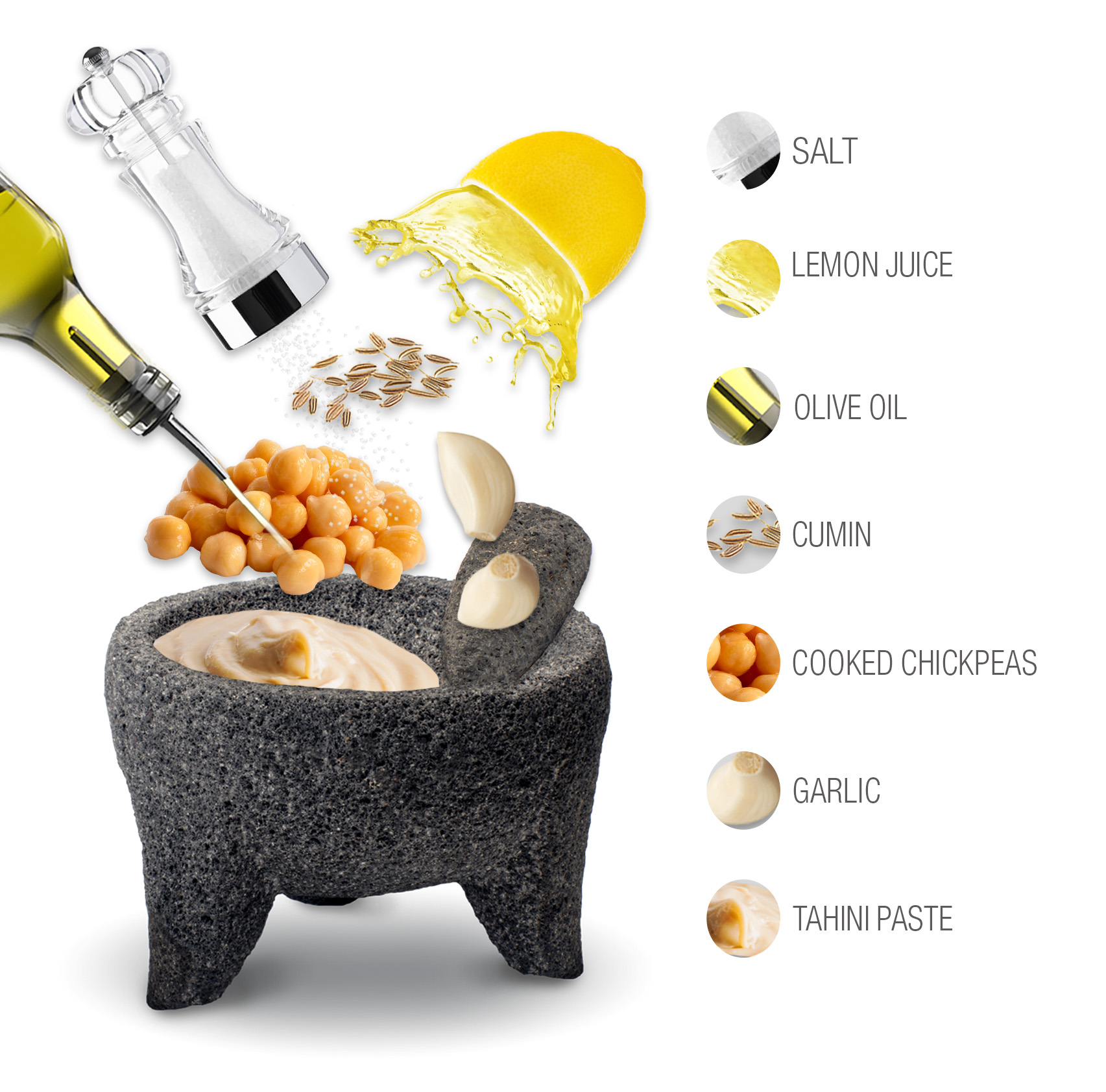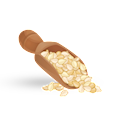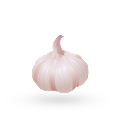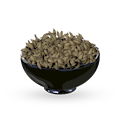MAIN INGREDIENTS
This internationally popular, beige-colored spread is traditionally made with mashed chickpeas, tahini sesame paste, lemon juice, and garlic. People across the world love hummus for its tangy flavor and the fact that it is filled with nutrients.
When served, it is typically dressed with a drizzle of olive oil, and is then used as a dip for vegetables or a flavorful filling for flatbreads such as pita. Even today, not much is known about its origins, although the earliest mention of hummus dates back to 13th-century Egypt.
VARIATIONS OF Hummus
Baba ghanoush is a Middle Eastern dish that's mostly associated with Lebanon (although it's origins are also connected to Syria and Jordan), and it consists of roasted and puréed eggplants, garlic, olive oil, lemon juice, and tahini, with the occasional addition of mint, onions, and various spices.
Its name comes from the Arabic phrase baba gannuj, where baba means father or daddy, and gannuj means pampered or spoiled, referring to a supposed invention of baba ghanoush by a member of a royal harem.
The vegetarian combination of lentils and rice is a classic Levantine fare that is best served with fresh salads. The dish is assembled with cooked rice and lentils that are enriched with generous amounts of onions sautéed in olive oil. When served, the combination is topped with fried onions and is usually sided with plain or garlic-flavored yogurt (the dish is then not vegan-friendly anymore) and flatbread, which should be used instead of utensils.
Apart from the traditional version, some varieties may employ bulgur instead of rice, and the dish is easily adapted with various spices and fresh herbs.
MAIN INGREDIENTS
Even though these protein-packed chickpea fritters are listed as one of Israel's national dishes, and are a staple in many Middle Eastern countries including Palestine and Lebanon, it is often suggested that falafel might have evolved from the Egypt dish known as taameya. By the 1950s, to earn a living, Yemenite immigrants in Israel started making falafel in the streets, selling it wrapped in paper, which has eventually transformed this ancient dish into an early form of Israeli fast food and facilitet the global recognition of it.
As an alternative to the Israeli version, the Egyptian taameya uses fava beans instead of chickpeas, while the mixture is typically flavored with parsley, coriander, cumin, and onions. Today, both in Israel and other Middle Eastern countries, falafel fritters are most commonly enjoyed in pita or lafa flatbread sandwiches, topped with fresh or pickled vegetables, and coated either in hummus paste, tahini dip, or a zesty, garlic-flavored yogurt sauce.
Tabbouleh is a colorful Lebanese and Syrian national dish that is usually considered a salad, with a crunchy and chewy texture, made with fresh, finely chopped parsley leaves, olive oil, bulgur wheat, and chopped mint leaves as a base. It originated in the mountains of Lebanon and Syria, where edible herbs that are used in tabbouleh were consumed by Arabs since Medieval times.
Usually served as an appetizer, it is sometimes accompanied by pita bread, baba ghanoush, or hummus. Chopped red tomatoes, diced cucumbers, fresh lemon juice and minced onions can be added to the salad, imparting a tangy flavor. It is best to refrigerate tabbouleh for a few hours before serving to improve its taste.
Muhammara is a nutritious dip originating from the Syrian city of Aleppo. It is made with a combination of roasted red peppers, olive oil, and ground walnuts. The peppers give the dish a particular sweetness and smoky flavor, while ground walnuts make it texturally exciting.
Lemon juice, pomegranate molasses, garlic, and salt are often added to the dish. Traditionally, it was prepared in a mortar, but modern techniques usually mechanically blend the ingredients, so its texture might vary from grainy to smooth. It is usually served individually in small bowls or in larger plates, when it is consumed communally.
Oil-cured eggplants are a staple throughout Levantine and Middle Eastern cuisine. The dish is traditionally prepared with small-sized baby eggplants that are shortly boiled and stuffed with a flavorful mixture of roasted red peppers, walnuts, garlic, and salt.
The eggplants are then cured in olive oil and are traditionally enjoyed for breakfast, usually accompanied by labneh, vegetables, and flatbread, but they also work as a standard meze dish or a snack. Though their origin is vague, preserved eggplants are strongly associated with Syria.
The traditional Levantine rice pudding called meghli is a vegan, gluten, and dairy-free dish that is traditionally consumed to celebrate the birth of a baby. It is also said that the brown color of the spiced pudding is symbolic for the richness of soil, while the rough texture of the nuts on top represents growing seeds.
In addition to those symbolic meanings, the caraway in the pudding is thought to assist new mothers with lactation and bloat reduction. Meghli is made with rice flour, caraway, water, sugar, spices, a variety of nuts and spices, and is then cooked over low heat until the mixture can hold itself when tilted.
TasteAtlas food rankings are based on the ratings of the TasteAtlas audience, with a series of mechanisms that recognize real users and that ignore bot, nationalist or local patriotic ratings, and give additional value to the ratings of users that the system recognizes as knowledgeable. For the “Top 8 Syrian Vegetarian Dishes” list until March 21, 2025, 6,832 ratings were recorded, of which 2,243 were recognized by the system as legitimate. TasteAtlas Rankings should not be seen as the final global conclusion about food. Their purpose is to promote excellent local foods, instill pride in traditional dishes, and arouse curiosity about dishes you haven’t tried.










